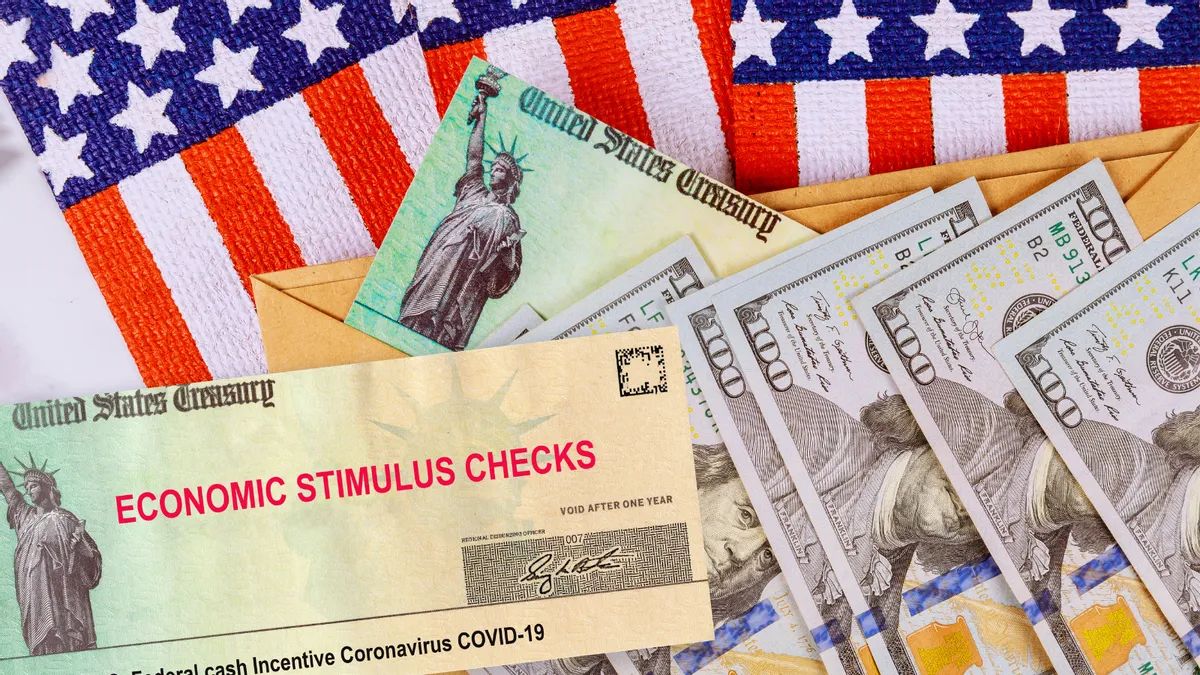With renewed debate in Washington over potential economic stimulus packages in 2025, millions of Americans are paying close attention to news of possible government relief. But with anticipation comes vulnerability. Across the U.S., fraudsters are rolling out increasingly sophisticated stimulus scams designed to exploit confusion, steal personal data, and drain bank accounts.
Officials from the Internal Revenue Service (IRS) and Federal Trade Commission (FTC) are already warning that fraudulent calls, fake websites, bogus checks, and even AI-generated impersonations are circulating at record pace. Unlike older scams that were easier to spot, the new wave of frauds often look, sound, and feel real—making them more dangerous than ever.
Why Scams Surge During Relief Announcements
Historically, stimulus-related scams spike whenever the government signals economic relief. Between the time a package is discussed and when it is officially confirmed, scammers thrive on uncertainty.
They know citizens are anxious, scanning emails, texts, and social media for clues about eligibility and payment dates. By impersonating the IRS, the U.S. Treasury, or even state governors, scammers position themselves as trusted authorities.
Fraud experts stress an important reminder: legitimate agencies never send unsolicited emails, texts, or social media messages promising stimulus funds. When aid is approved, qualified Americans receive it automatically, typically by direct deposit or mailed check, with no application fees or special processing required.
Common Stimulus Scam Tactics in 2025
Fake Texts Claiming Approval
Scammers send SMS messages claiming “your stimulus payment has been approved.” Victims are prompted to click a link to “verify” information, but the link leads to a counterfeit site that steals Social Security numbers, bank account details, and login credentials.
Tip: Never click links from unknown senders. Only trust official .gov websites.
Bogus Checks With Refund Requests
Fraudsters mail realistic-looking checks with government logos. Once deposited, the recipient is told the payment was too high and asked to refund the difference via wire transfer or mobile app. When banks later identify the check as fake, the victim is left owing the refunded money.
Tip: If you weren’t expecting a check, contact your bank or the IRS directly before taking any action.
Phishing Emails Mimicking the IRS
Emails are dressed in official-looking graphics, IRS logos, and government-style language. They urge recipients to “confirm eligibility” or “update details” to release payments.
Tip: The IRS never sends unsolicited emails requesting sensitive information. Delete immediately.
Fraudulent “Agent” Phone Calls
Callers pose as IRS staff, demanding personal verification to release payments. They may even know partial personal details—like your birthday or zip code—making the call sound authentic. Victims pressured into “verifying” details often hand over Social Security numbers or banking info.
Tip: The IRS does not cold-call taxpayers about stimulus payments. Hang up and verify through official contact channels.
Social Media Relief Ads and Posts
Fraudulent ads appear on platforms like Facebook, Instagram, and WhatsApp, promoting “early access” to stimulus funds. Clicking through leads to polished but fraudulent websites.
Tip: Government relief is never advertised via social media ads. Ignore or report such posts.
Impersonation of Local Officials
Some scammers pretend to be governors, mayors, or even public health officials, claiming they need to “verify eligibility” for local relief programs. The false sense of authority tricks many into sharing sensitive data.
Tip: Real officials will never text or call individuals for personal data. Always check your state’s official portal.
AI and Deepfake Impersonations
The most concerning trend in 2025 is the use of AI-powered voice cloning and deepfake videos. Criminals can now mimic the voice of a government official—or even a family member—urging quick action. Victims are pressured to transfer money or disclose private details.
Tip: If something feels off, hang up and reconnect using trusted, official contact numbers.
Online Ads Promising Instant Payouts
Some fraudulent websites claim you can receive “funds within hours” by completing a form. What they want is your data and bank access.
Tip: No official stimulus program promises instant payouts.
Advance-Fee Processing Offers
Fraudsters demand a “processing fee” via gift card, Venmo, Cash App, or cryptocurrency, claiming it will fast-track your payment. Once paid, the scammer disappears.
Tip: Government aid is never tied to fees. Any request for upfront payment is a red flag.
“Pre-Qualification” Notices
Victims receive emails or texts saying they’re “pre-approved” for a stimulus. Clicking the link leads to fraudulent portals that harvest personal details.
Tip: There is no pre-qualification process for government stimulus checks.
Paid Application Services
Scammers offer to apply on your behalf for a fee. But official stimulus distribution is automatic—or, when applications are required, they’re handled free of charge through government portals.
Tip: Do not pay third parties for services the government provides for free.
Fake Grant Programs With Fees
Fraudsters invent “special grant programs,” charging a registration or processing fee before sending funds. Once the money is paid, they vanish.
Tip: Legitimate government grants do not require upfront fees.
Recognizing Red Flags
Fraud experts recommend a mental checklist whenever you receive communication about stimulus payments:
- Was this contact unsolicited?
- Am I being pressured to act immediately?
- Does the message ask for payment or personal details?
- Is it promising unusually fast or generous benefits?
If the answer is yes to any of these, you’re likely facing a scam.
Steps to Protect Yourself
Authorities recommend the following best practices:
- Verify sources: Only trust information on IRS.gov or your state’s official site.
- Avoid clicking links: Especially in emails, texts, or social media posts from unknown senders.
- Protect sensitive data: Never share Social Security numbers, bank logins, or passwords with unsolicited callers or sites.
- Ignore unsolicited calls: The IRS and Treasury do not cold-call or request data over the phone.
- Warn vulnerable family members: Discuss scams with seniors, who are often targeted.
- Report fraud: Suspicious activity should be reported to the FTC (ReportFraud.ftc.gov) or the IRS.
Why Scammers Are Winning With AI
What makes 2025 different is the integration of artificial intelligence. In past years, fake texts or emails were easy to spot due to poor spelling and generic formatting. Now, AI-generated language, fake voices, and realistic videos make scams far more convincing.
Experts caution that the next wave may be automated chatbots posing as government agents online, capable of real-time interaction to manipulate victims.
The Bigger Picture – Public Trust at Risk
Stimulus scams don’t just drain individual wallets—they undermine trust in government systems. Every false check or impersonation makes it harder for Americans to believe genuine relief announcements.
Consumer advocates argue that alongside fraud prevention, the federal government must also focus on rapid, clear communication when new programs are introduced to close the window of uncertainty scammers exploit.
5 FAQs
Q1: How do I know if a stimulus message is real?
A1: Only trust information from IRS.gov or official state websites. The government does not send unsolicited texts, emails, or social media messages about payments.
Q2: Can I really get a fake check from scammers?
A2: Yes. Fraudsters often mail counterfeit checks that appear official. They later ask for a refund of “overpaid” amounts, leaving victims responsible when the bank flags it as fake.
Q3: How do AI scams work with stimulus checks?
A3: Scammers now use AI voice cloning and deepfake videos to impersonate officials or relatives, pressuring victims into giving up personal or financial details.
Q4: Does the IRS ever call or email about stimulus checks?
A4: No. The IRS never cold-calls, emails, or requests payment information. Payments are automatic if you qualify.
Q5: Where can I report a suspected stimulus scam?
A5: Report scams to the FTC at ReportFraud.ftc.gov or the IRS phishing unit ([email protected]).











